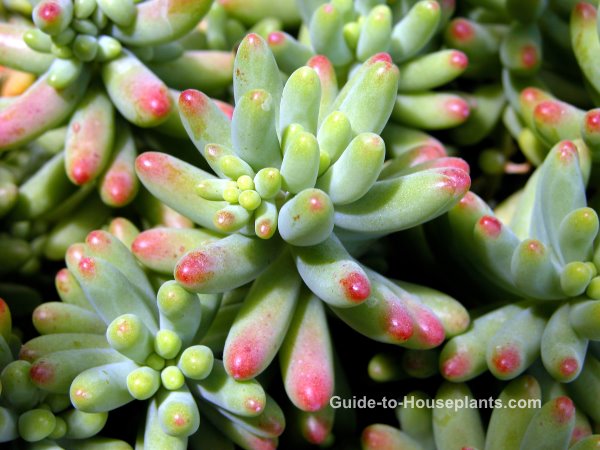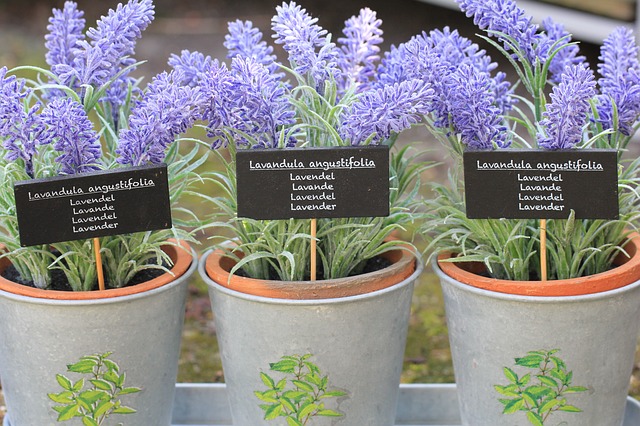Growing Banana Plants Indoors
If you're thinking about growing banana plants indoors, Musa acuminata 'Dwarf Cavendish' is the one that you want.
Most banana varieties grow too big to keep as house plants. However, this is a compact type that only reaches about 6 ft when mature. You'll find dwarf banana plants from online nurseries and some garden centers in spring and summer.
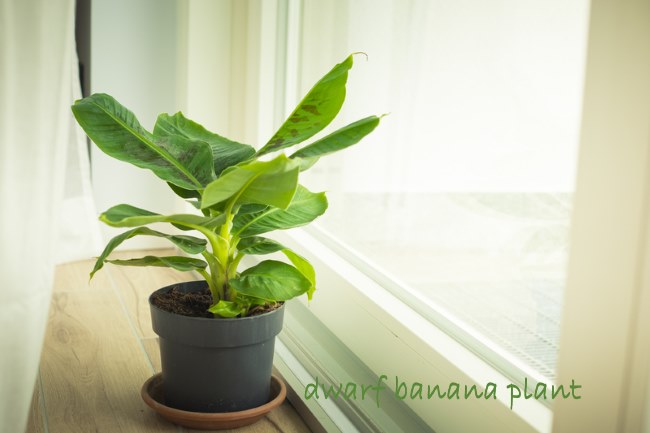 Give your banana plant plenty of light year-round to make it thrive. Photo: ©Silvia Cozzi
Give your banana plant plenty of light year-round to make it thrive. Photo: ©Silvia CozziGet to Know Dwarf Banana Plants
Although banana plants look like trees, their trunks are not woody, but are actually pseudostems formed from overlapping leaf sheaths. The pseudostems grow from rhizomes beneath the soil.
How big does a dwarf banana plant get? Musa acuminata 'Dwarf Cavendish' will reach a height of about 6 ft (1.8 m) when grown in a container indoors. There is a 'Super Dwarf Cavendish' that rarely surpasses 4 ft (1 m) tall.
Its broad, shiny leaves -- growing 2-3 ft (60-90 cm) long -- are enough to qualify the plant as a beautiful, tropical accent for your home. However, given enough warmth and sunshine, bunches of bananas are entirely possible.
We Are Family
Native to Southeast Asia, dwarf banana plants are in the Musaceae family.
This clan includes other captivating tropical plants you can grow indoors, such as parrot flower and golden lotus banana. What they all have in common are eye-catching blooms and big leaves, so give these houseplants plenty of room to grow.
About the Bananas
Each pseudostem will produce one purplish-red flower cluster, which develops fruit. The bananas are about 6 in (15 cm) long and edible.
Cut off the bunch when the fruits are well-formed. If you want, you can harvest them a week before ripening. Hang them in a shaded spot, allowing the bananas to continue to ripen and develop flavor.
Once a stem grows fruit, it dies. Cut the stem off and allow the offsets to take over.
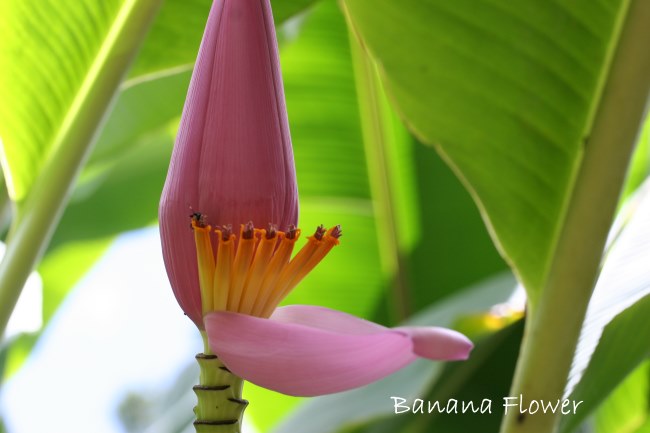
Special Care for Growing Banana Plants Indoors
Wondering whether to repot...or not? Repot in spring. Fast-growing banana plants will have robust new growth by moving up to a larger container. Use one with drainage holes to prevent root rot.
When to water. Bananas are heavy drinkers. Keep the soil constantly moist, but not soggy. If the leaves fold downward from the center rib and turn brown, the plant is thirsty.
What to prune. Use pruning shears to cut off any damaged leaves. The leaves split easily, and over time can look ragged. Be selective in what you cut -- you don't want a stem with few leaves.
Watch for bugs. Banana plants are virtually pest-free. Watch for the webbing of spider mites. You can help to prevent an infestation by raising the humidity around the plant. Another possible pest is aphids, which can cause new leaves to curl, look dry and discolored. Treat any infestation right away.
Banana Plant Care Indoors
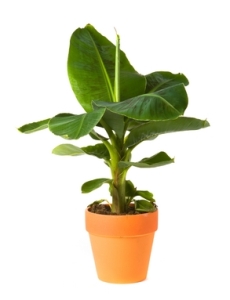
Light: Bright light to full sun. If your banana plant doesn't produce fruit, it's not getting enough sun. Growing banana plants with at least 6 hours of direct sunlight per day in spring and summer will help them to grow and produce fruit. You can move your plant outdoors for the summer, just be sure to bring it inside when the temperature drops to 60°F/16°C at night.
Water: Growing banana plants are thirsty, so check on your plant often during the growing season. Keep the soil evenly moist in the spring and summer, slightly drier in winter. Always use room-temperature water -- this tropical native doesn't like the cold at all.
Humidity: Moderate room (50% relative humidity or higher). Indoor air can become extremely dry, especially in the winter months. It's a good idea to set a humidity monitor near your plant, rather than guess. Take a look at these easy ways to increase humidity for your indoor tropical plants.
Temperature: Average room temperatures 65-75°F/18-24°C. Exposure below 60°F will stop all growth, and temps below freezing can kill the plant. Keep this tropical plant away from cold blasts from windows and doors.
Soil: Any good-quality potting mix
Fertilizer: Fertilize regularly. Bananas won't grow fruit without a constant supply of nutrients. Feed every 2 weeks spring through fall with a balanced liquid fertilizer diluted by half.
Propagation: Division of rhizomes. Or detach suckers that are 3-6 months old. To detach a sucker, dig down and carefully separate its roots, and pot it up separately. It takes about a year after planting a sucker for it to flower.
